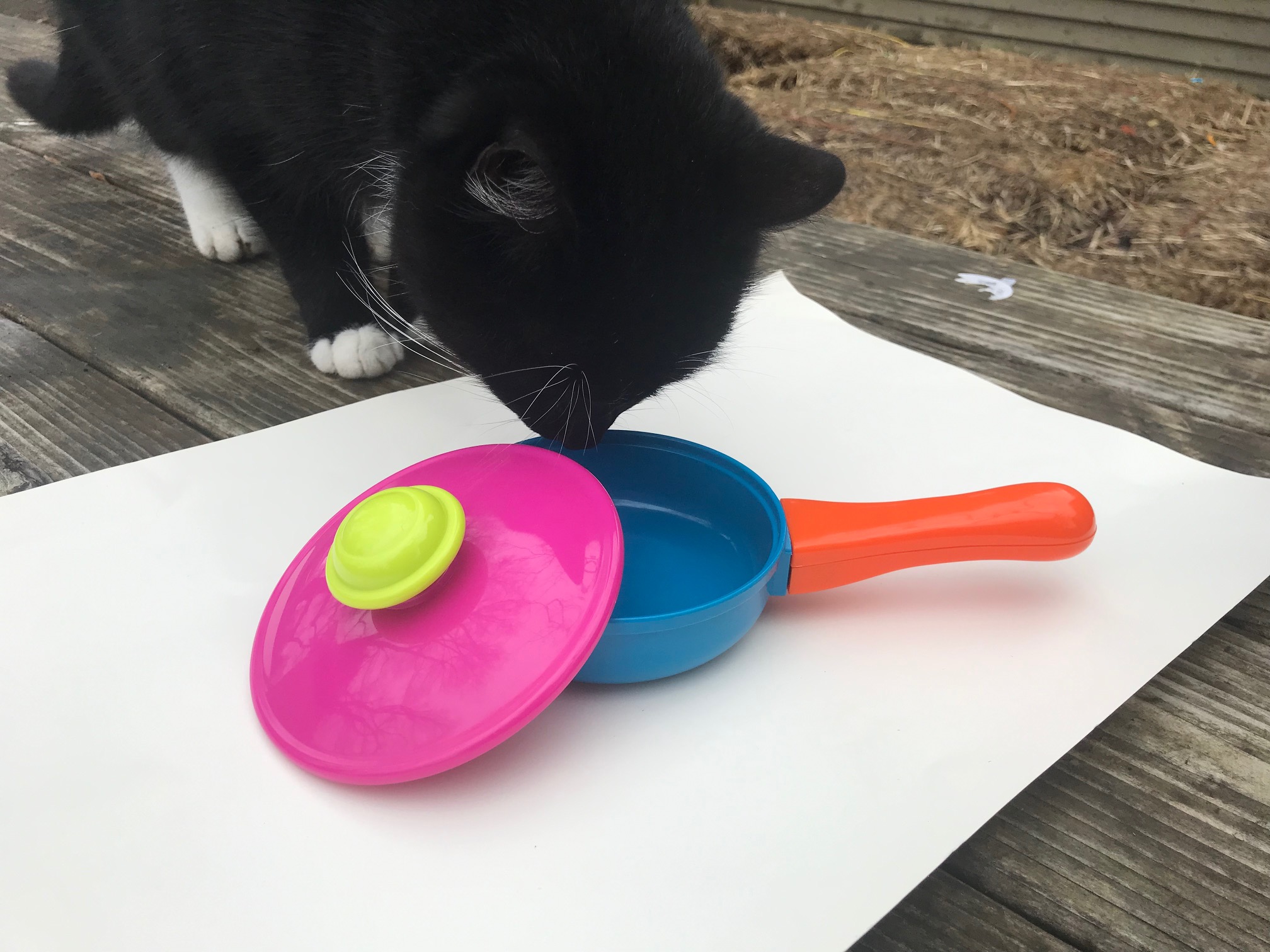Multi-colored plastic toy frying pan: Non-detect (negative) for Lead, Cadmium, Antimony & Mercury.
When tested with an XRF instrument (for repeated 60-second / 1-minute tests) this plastic toy frying pan had the following set of readings (below):
Green Plastic Knob
- Copper (Cu): 12 +/- 7 ppm
- Iron (Fe): 99 +/- 17 ppm
- Titanium (Ti): 883 +/- 203 ppm
Orange Plastic Handle
- Zinc (Zn): 38 +/- 7 ppm
- Copper (Cu): 15 +/- 10 ppm
- Nickel (Ni): 13 +/- 7 ppm
- Titanium (Ti): 997 +/- 223 ppm
Pink Plastic Lid
- Arsenic (As): 4 +/- 2 ppm
- Iron (Fe): 36 +/- 16 ppm
- Titanium (Ti): 1,428 +/- 237 ppm
Blue Plastic of Pan
- Copper (Cu): 283 +/- 20 ppm
- Iron (Fe): 61 +/- 21 ppm
- Titanium (Ti): 4,390 +/- 337 ppm
Metal Screws
The screws are smaller than the scope of the XRF so the reading is also including some of the surrounding orange plastic.
- Barium (Ba): 113 +/- 54 ppm
- Chromium (Cr): 10,200 +/- 100 ppm
- Zinc (Zn): 40 +/- 13 ppm
- Copper (Cu): 767 +/- 36 ppm
- Nickel (Ni): 343 +/- 24 ppm
- Iron (Fe): 34,800 +/- 400 ppm
- Titanium (Ti): 243 +/- 105 ppm
This toy was negative (non-detect) for Lead, Cadmium, Mercury and Antimony in all components.
The Arsenic level (found only in the pink plastic) was very low and only detected at some spots within the lid of the toy. In a case like this I would expect any Arsenic (especially at this trace level) to be bound within the plastic. I would also want to confirm this level is present by doing digestive sampling of the piece prior to making a final determination about the presence of Arsenic (again, given the level is so low.)
I would not have a problem with my child playing with this toy, especially since it is not a toy that a child is likely to put in their mouth.
XRF test results are science-based and replicable. Metals not detected by the XRF (in consumer goods mode) are not listed. All testing reported on this site is done using a freshly calibrated XRF instrument.
As always, thank you for reading and for sharing my posts.
Please let me know if you have any questions.
Tamara Rubin
#LeadSafeMama
*If you purchase something after clicking on one of my Amazon Affiliate links I may receive a small percentage of what you spend at no extra cost to you (usually about 6%!). Thank you.


Never Miss an Important Article Again!
Join our Email List





